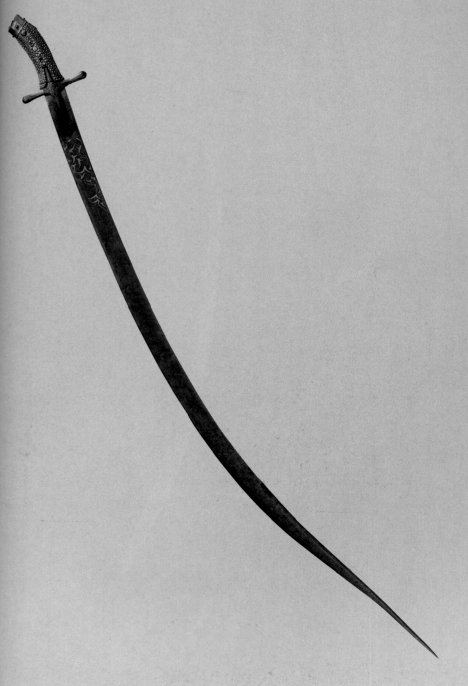


Some interesting swords...
(Below) Some Tartar sabers from the 16th and 17th centuries designed
for both cutting and thrusting. They seem to be primarily cutting weapons,
based on the hilt angle, which is not in line with the tip. The sharply
pointed tip was probably intended more for thrusting at fallen enemies from
horseback than for thrusting in a combat situation. In fact, these weapons
are not very common, and probably were not a very effective repacement for the
two weapons usually carried by Polish and Hungarian cavalry: the standard
cutting saber and the thrusting palsasz.



 (Left) A cut
and thrust sword fitted with a thumb ring instead of a crossguard that can be
fingered.
(Left) A cut
and thrust sword fitted with a thumb ring instead of a crossguard that can be
fingered.
Björn Hellqvist sent me more more info about this particular sword from "White Arms of the Royal Armoury" (the one in Stockholm, that is):
"Sword of Dutch-Swedish type.
Blade signed by Johannes Tesche-Wirsberg, 1630-1632. Hilt of steel with ornamentation of applied silver, openwork shell-guard and S-shaped quillons. Straight double-edged blade with etched decoration depicting Gustavus II Adolphus. Text: GUSTAVUS ADOLPHUS D G SVECORUM GOTHORUM ET VANDALORUM REX. At the base of the blade: ME FECIT SOLINGEN. On the inside an etched oval containing a half-portrait the margrave William V of Hesse-Cassel and the text: WILHELMUS D G HASS LANDGR COM CATIM DIET ZGH NIDD GEN EXER DUX. At the base: IOHANNES TESCHE WIERSBERG.
Length: 1080 mm, length of blade: 908 mm, width of blade 38 mm, weight: 970 gr.
Presented to the Royal Armoury, 1910.
Made after the Treaty of Stralsund between Gustavus II Adolphus and William V, Margrave of Hesse, in November 1630.
Inv.No. 5219"